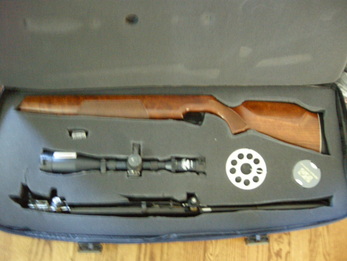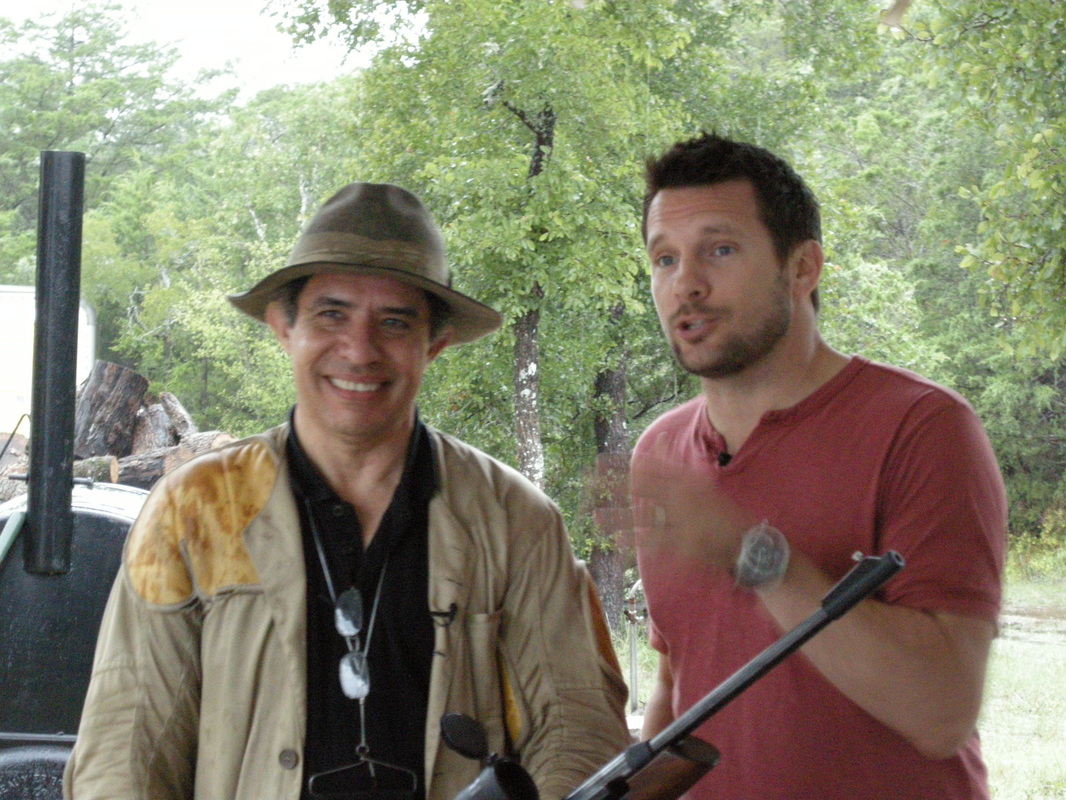
But perhaps most important of all is to make a FACTUAL assessment of what went on, what was a success, and which areas can be improved upon.
It is always hard to be completely objective, and the writer "pleads the Fifth" wherever it can be done so, but the writer also expresses his best intentions to make this post something fun and constructive from where other shooters, MD's, and other organizers can draw experience and ideas from.
Having said that let's get started:
The AAFTA 2013 National Matches at Somerville Texas were avidly anticipated and eagerly expected. The original "preparation match" of the ROTC was a good pointer at what the shooters could expect. Travelling had already been "scouted", but since in the meantime two airlines had merged, a few things needed to be changed last minute. Instead of AirTran we flew Southwest.

Having had the experience of going to three National Matches before and Two World Matches, we already knew how to pack light.
The drop bottoms of our wheeled duffle bags have been converted into rifle-carrying cases that have five hard sides and the side that is not hard is under the whole rest of the equipment that is stored in the upper/large compartment. Because Airguns, and specifically piston airguns, are separated by the TSA from PCP and firearms, we can get away with carrying only one piece of luggage.

We try to make our clothes double up as sightseeing clothes, jackets are light and we layer for all weather possibilities.
Overall, bags usually weigh at exactly 50# and they are handled like any other piece of luggage:

No extra feee, no extra charge, just one simple bag. The Duffle bags do not exceed the 62" added length height and width, and therefore are not subject to "oversize" treatment $$$.
On our return from Germany, the Prague Airport tried to charge us an "inspection fee" for our bags, as if they were firearms. Upon written complaint to SAS, our fee was returned a few days ago.
One important, little known, aspect is that riflescopes (even with mounts), can be carried in the carry-on case. Usually most airlines will allow you one carry-on piece and one personal item. Laptops and other electronics usually constitute the personal item, but in the carryon you can take just enough stuff to get over the first night in case your main luggage piece is sent to Alaska when you are landing in Arkansas
Car rental is usually best obtained through the multiple websites like Carrentals, Hotwire and others. In our specific case, we had already obtained a "meeting" rate from one of the major rental agencies. So we stuck with that.
It is always wise to take your GPS system well loaded with all the destination points and the maps of where you're going to drive. Be it Norway, Germany, or Texas, make sure that you have your GPS up to date and that it has stored maps and addresses/locations of the places you're going to.
In this way, once you hit the destination airport tarmac, you are already equipped with a place to spend the night, the conveyance to get you there from here and the knowledge base to get there in comfort.

YAGC had provided for TWO sight-in ranges. While one was crowded, the other one was fairly empty and we could toy with our distances and settings to our heart´s content.
We shared the range with some of the Hunter crowd: Don, Scott and Alan IIRC, so we had a ton of fun.
Towards the end of the day, we had a severe problem with one of our guns, but we were able to make a good one of the two we had and with the Rifle MD's approval, we prepared to share the rifle.

Here we found our second very nice surprise. "The Handbook" had been included as part of the "goody bags" handed out to all shooters. Now there was NO excuse for not knowing the rules. Everyone had them in hand.
Meeting went smooth and there was no time lost in defining what was a kneeling or a standing position.
Shooters were advised to take their squad clipboards from the scoreboards and to take a timer, the timer was to be left at the lane, not carried from lane to lane, and the scored cards were to be left in their place at the scoreboards when the shooting was done. No need to hunt for the score gatherer! Brilliant!
Scoreboards had clearly marked hooks with the starting lane number, so there was no question as to the consistency of the procedure. I repeat: Brilliant!

Not only is he a good shooter, he has the traditionally British sense of humour and he lives very near where I spent a few years in England, so we had some common things to share.
He was shooting an action that belonged to Cliff Smith, but this time he had brought his stock, so that part was more familiar than last year's gun. Alas, the mounting of the scope did not prove to be as easy and Terry had some issues with his numbers and his trajectory. But to the lanes we went and we did the best we could.

1.- Reducers allow MD's to test the shooters at all possible distances. The elimination of reducers conditions the MD's to almost exclusively long shots.
2.- Reducers have to be designed and placed wisely. A thick reducer (1/2" to 5/8" in thickness) is like shooting through a tube that is not aligned to the shooter or the pellet path. Not only is the shape of the KZ changed from circular to oval (something that happens even in thin reducers), the size is drastically affected when reducers of 1/2" diameter and 1/2" thickness are located at 30° of inclination. Perhaps the maths can be done elsewhere but Terry did comment that in their matches that style of reducers have to be inclined towards the shooter.
In these targets, those scopes with large magnifications (35X and above) had a clear advantage.
This is an important area of opportunity for improvement. Reducers are useful to MD's, but when located in elevated or steeply declined positions, they need to be made appropriately and / or oriented correctly. Not all targets work in non-horizontal positions, so the call falls on the MD what to do.
Still, the variety of targets, placements, ranges and conditions made for a VERY agreeable course, even if it was very challenging.
After we had shot our course with less than stellar results for all of us, we headed back to the HQ, hung our clipboards in the correct hook positions and sat down to chat and eat.
By the time desert time came, we coordinated with Scotty, who had asked George Hamilton to keep the cake in his fridge and the cake was brought out. Thanks, Scotty and George!
The other areas where much is expected is in the raffle/door prize and the auction. Again, I think we are stressing the unimportant part to the detriment of the substantive part.
Also on the score, Team scores in the end were finally posted with only 4 persons per team. As per AAFTA rules, teams must consist of five shooters.
And then, at the Shooters Meeting for Sunday, the boards were up and it was then evident that not all shooters within a Division/Class had been squadded in the same course, also no mention was made as to which, where, how or why points were awarded when targets were taken off.
To this date, I still do not know which target was taken off the white course, nor why, and where the target was located. I know about the blue course because I asked, but this is an interesting area of opportunity for improvement: Transparency and clear accounts are important in a match.
Before I am remiss, I have to emphasize my sincere appreciation for Scotty York, the fact that he did NOT shoot to be attentive to all the match is a shining example of dedication. MD's have a ton of things to worry and think about and if they try to shoot, then one of those masters is going to be displeased.
As Sunday wore on and the decision was made to cancel the second day "leg", the raffle and auction took place and then the prize awards were given.
Here it is important to mention how closely Yegua Airgun Club worked with the local authorities, chamber of commerce and local establishments to make this event possible for all of us.
How the FT clubs are perceived in the communities where they operate can have a hugely positive impact if when an event such as this one with almost 90 registered shooters from three different countries meet in those communities with the corresponding boost to the local economy in hotel rooms, restaurant bills, purchases in local stores, etc. As the modern world advances and moves away from the former rural settings, it is important to convey to the local authorities and local economic planning bodies how important an event like this can be. The raffle of a few prizes using as tickets the receipts of local purchases was simple, effective and fully convincing. Another brilliant stroke!
Sure it is not easy to shoot when the cameraman is almost in your face, but the more we, FT shooters, make the best possible effort to popularize our sport, the better off we will all be.
I will not comment further. The YAGC October Match will be a memorable event in many aspects. Some of them VERY positive, and these are the ones that need to be stated and re-hearsed. Those that present opportunity for improvement need to be addressed in a collegiate form so as to have better National Matches in the future.
My many, many, thanks to all of YAGC's volunteers! And especially to two very important persons:
HM





 RSS Feed
RSS Feed